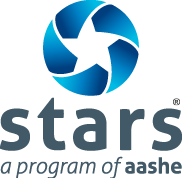| Overall Rating | Gold - expired |
|---|---|
| Overall Score | 66.48 |
| Liaison | Dayna Cook |
| Submission Date | Sept. 28, 2020 |
Northern Arizona University
OP-21: Water Use
| Status | Score | Responsible Party |
|---|---|---|

|
5.43 / 6.00 |
Jon
Heitzinger Associate Utilities Director Facility Services |
"---"
indicates that no data was submitted for this field
Level of ”Physical Risk Quantity” for the institution’s main campus as indicated by the World Resources Institute Aqueduct Water Risk Atlas:
High
Total water withdrawal (potable and non-potable combined):
| Performance Year | Baseline Year | |
| Total water withdrawal | 224,318,670 Gallons | 267,356,440 Gallons |
Potable water use:
| Performance Year | Baseline Year | |
| Potable water use | 167,220,620 Gallons | 244,797,540 Gallons |
Start and end dates of the performance year and baseline year (or three-year periods):
| Start Date | End Date | |
| Performance Period | July 1, 2018 | June 30, 2019 |
| Baseline Period | June 1, 2005 | July 30, 2006 |
A brief description of when and why the water use baseline was adopted:
2005 was the year we have used in past reports. However, we were unable to confirm the numbers. FY06 was used as the first year with reclaimed water on campus. The number was received from Utility Services tracking.
Figures needed to determine "Weighted Campus Users":
| Performance Year | Baseline Year | |
| Number of students resident on-site | 9,834 | 6,053 |
| Number of employees resident on-site | 18 | 15 |
| Number of other individuals resident on-site | 1 | 0 |
| Total full-time equivalent student enrollment | 30,512 | 12,523 |
| Full-time equivalent of employees | 3,455.67 | 2,202 |
| Full-time equivalent of students enrolled exclusively in distance education | 9,345.67 | 4,104 |
| Weighted campus users | 20,930.50 | 9,482.75 |
Potable water use per weighted campus user:
| Performance Year | Baseline Year | |
| Potable water use per weighted campus user | 7,989.33 Gallons | 25,815.04 Gallons |
Percentage reduction in potable water use per weighted campus user from baseline:
69.05
Gross floor area of building space:
| Performance Year | Baseline Year | |
| Gross floor area | 6,884,770 Gross square feet | 4,498,861 Gross square feet |
Potable water use per unit of floor area:
| Performance Year | Baseline Year | |
| Potable water use per unit of floor area | 24.29 Gallons per square foot | 54.41 Gallons per square foot |
Percentage reduction in potable water use per unit of floor area from baseline:
55.36
Area of vegetated grounds:
| Performance Year | Baseline Year | |
| Vegetated grounds | 405.68 Acres | 380 Acres |
Total water withdrawal per unit of vegetated grounds:
| Performance Year | Baseline Year | |
| Total water withdrawal per unit of vegetated grounds | 552,944.86 Gallons per acre | 703,569.58 Gallons per acre |
Percentage reduction in total water withdrawal per unit of vegetated grounds from baseline:
21.41
A brief description of the institution's water-related behavior change initiatives:
Every water bottle refill station has an education sign on it designed by students. We recently replaced a natural turf field with synthetic (CALSENSE projected savings per year - Ralph). We have adopted the City of Flagstaff's Low Impact Development (LID)standards and are trying to utilize captured water for HVAC cooling water.
A brief description of the institution's water recovery and reuse initiatives:
The University taps into the City of Flagstaff's reclaimed water system for the majority of its landscaping irrigation and some of its toilet water usage. We are working with the City to overcome distribution bottle-necks to reach 100% reclaimed utilization for irrigation.
A brief description of the institution's initiatives to replace plumbing fixtures, fittings, appliances, equipment, and systems with water-efficient alternatives:
Most of campus water fixtures were changed out in 2012. Low flow toilets, shower heads and aerators were installed and are now our campus standard.
Website URL where information about the institution’s water conservation and efficiency efforts is available:
Additional documentation to support the submission:
---
Data source(s) and notes about the submission:
Information provided by: Jonathan.Heitzinger@nau.edu
The information presented here is self-reported. While AASHE staff review portions of all STARS reports and institutions are welcome to seek additional forms of review, the data in STARS reports are not verified by AASHE. If you believe any of this information is erroneous or inconsistent with credit criteria, please review the process for inquiring about the information reported by an institution or simply email your inquiry to stars@aashe.org.
